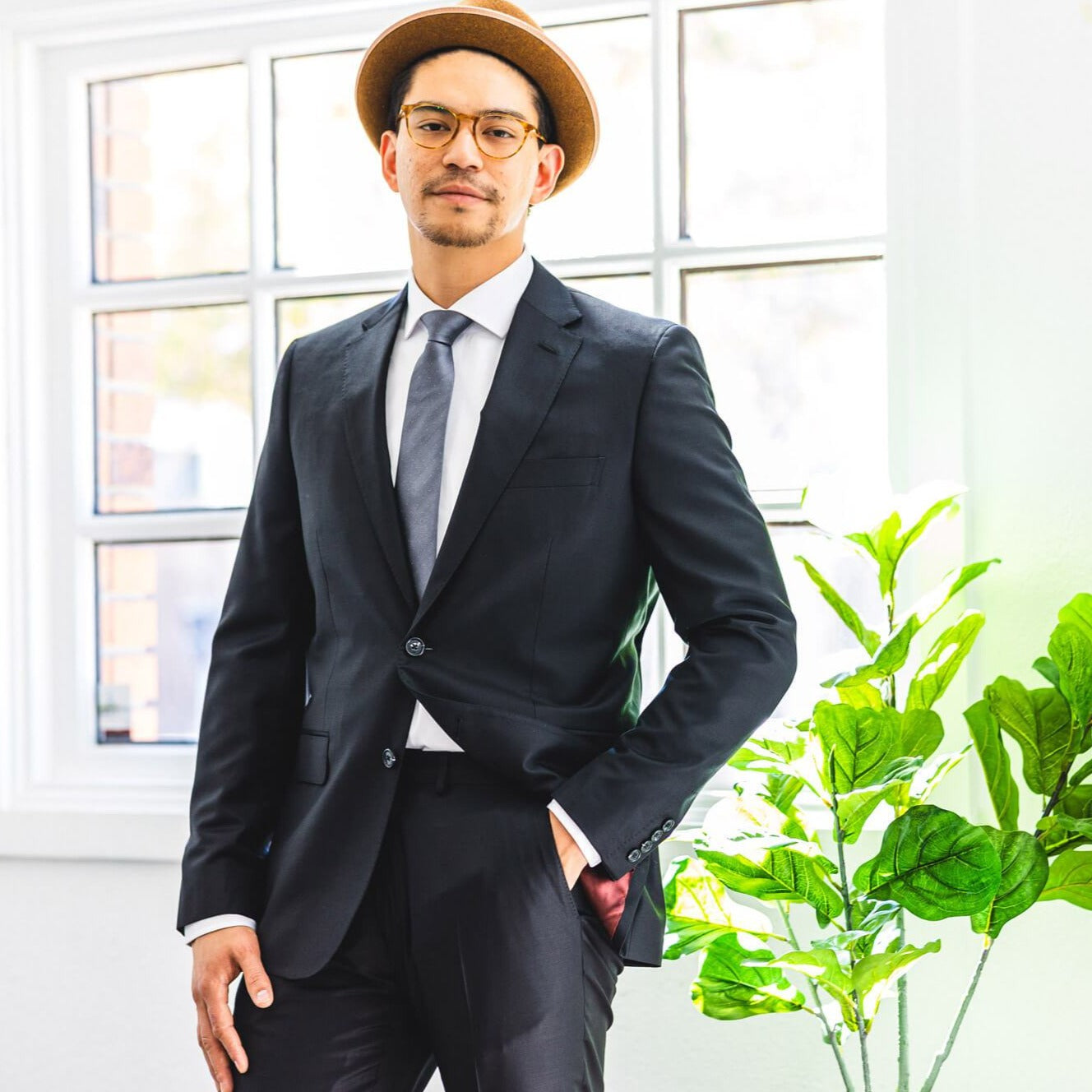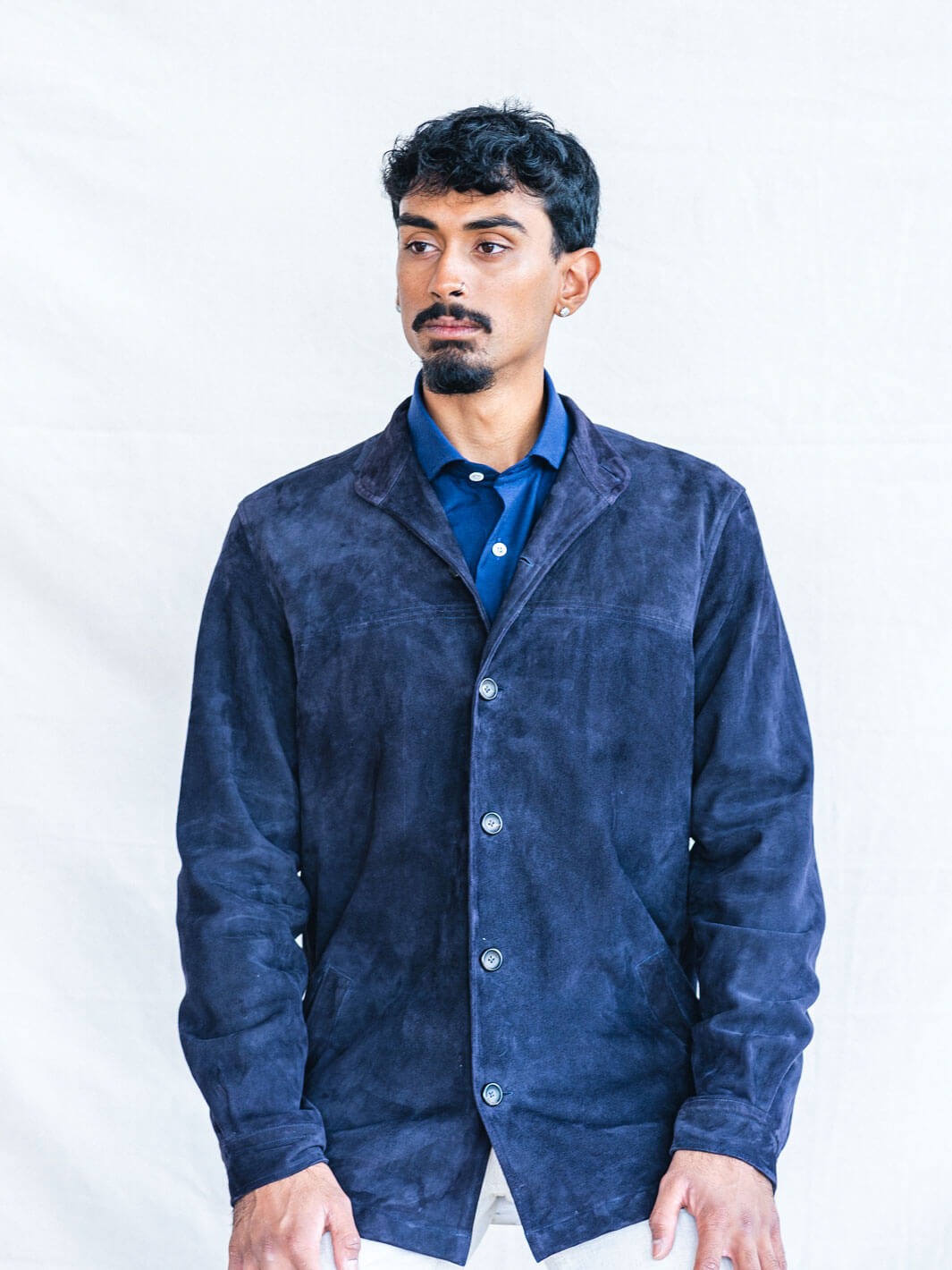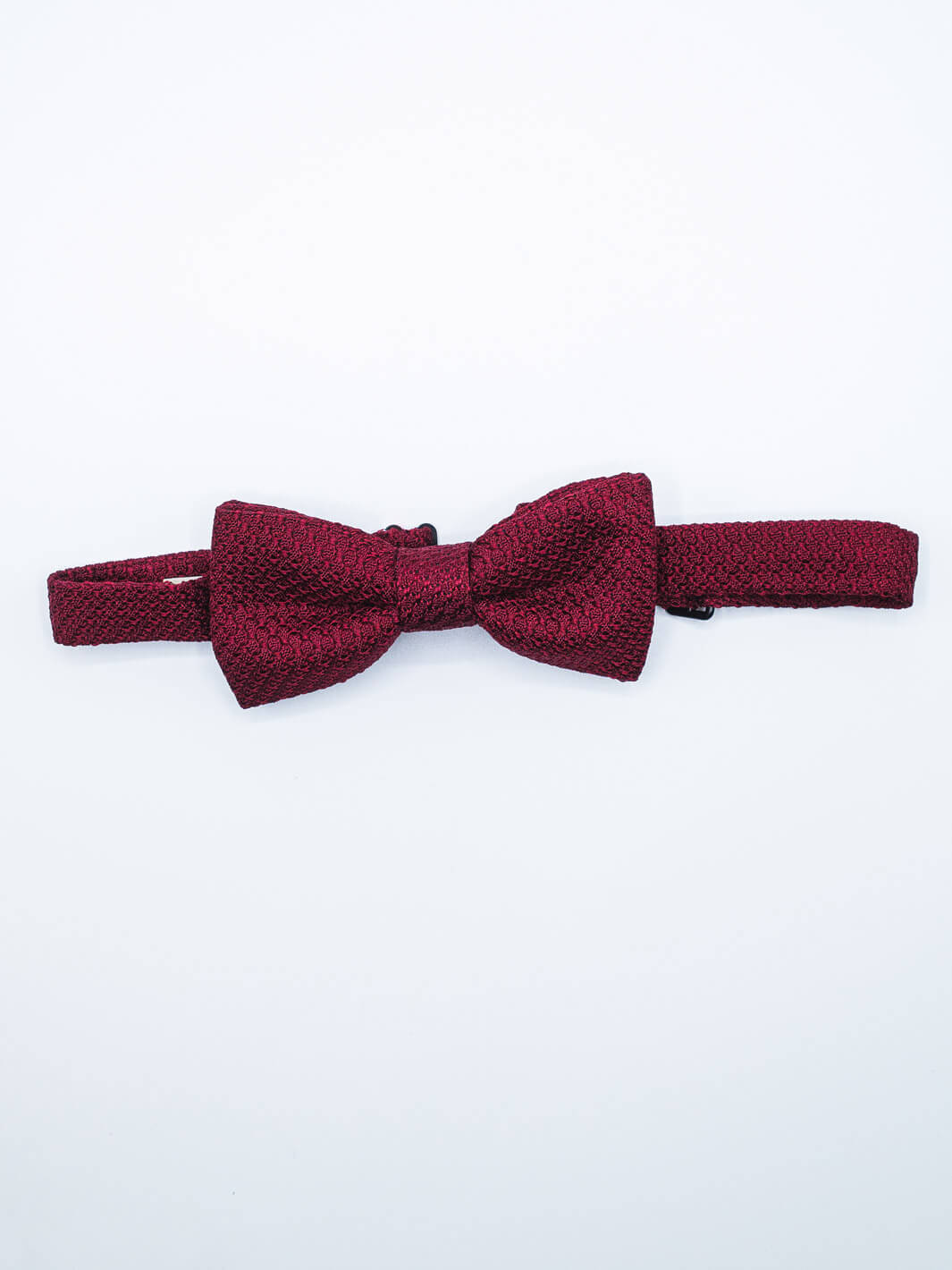To call Richard Anderson a Savile Row legend would be a pretty tepid understatement. Frogmarched to the street at the age of 17 by his father, who had spotted a newspaper advert for an apprentice cutter, having cut his teeth at legendary atelier Huntsman he opened his own eponymous establishment at Number 13 in 2001 with colleague Brian Lishak.
Lishak, who will celebrate a stunning seven decades on Savile Row next year, often regales customers with his recollections of sartorial liaisons with Steve McQueen, Paul Newman and Gregory Peck, and can recall taking the RMS Queen Mary across The Atlantic then taking sleeper trains to visit clients in New York, Chicago and San Francisco.

From left to right: Brian Lishak, Richard Anderson.
Anderson, meanwhile – who is author of tailoring bible Making The Cut – has constantly fused this rich heritage with modernity, building a reputation for marrying the old-school tenets of Savile Row tailoring with razor sharp, contemporary cuts and silhouettes.
His approach to his craft is unique—as is true of every tailoring house: while most tailors offering bespoke services partner with outside specialists for certain stages of production, Anderson is one of the few remaining ateliers to keep everything in-house.
But the basic stages involved—which Anderson outlines here for Anatoly & Sons, step by step—are, give or take, the same as those practiced by any bespoke tailor. And they reflect a level of commitment, of customer focus, that demonstrates why bespoke garments are not just much more “yours”—but also much more “you.”
“ROCK OF EYE” ASSESSMENT
“Rock of eye” – for reasons sartorial historians don’t seem clear on – refers to a tailor’s instinct, born of experience, when it comes to assessing a client’s physical quirks from the moment they encounter them. “It refers to someone like me looking at the body and, in our mind’s eye, assessing whether one shoulder is lower than the other, if his head's forward, if he's got ‘problematic’ shoulder blades, if his feet are at 10 to two or quarter to three, all that sort of stuff, which we call ‘figuration’,” explains Anderson, adding that even mannerisms, movements and personality are taken into account.
“Fast forward a week or so, when you're creating the pattern, and you'll have your figuration notes – head forward, prominent seat, hollowed back, prominent calves, anything that combines to help you create a nice pattern to kick off with – in mind.”
Our imaginary customer is barely through the atelier door, and any notions of AI taking over bespoke tailoring before it becomes sentient are already in the garbage.
FABRIC SELECTION
“Naturally we offer advice on this,” explains Richard. “We ascertain what the client wants from the suit or the garment. Is it for a wedding? Is it for business? What sort of climate is he going to be wearing it in? What colors and weights does he prefer? Is he flamboyant, will he want a pink lining, will he want oversize lapels? It’s a styling consultancy process.”
MEASURING UP
For all the instinctive assessment involved in bespoke tailoring, some hard math is also crucial to the process. “I'll take 19 measurements for a bespoke suit in all,” explains Richard. “Part of my job is to make good the less ideal parts of the body, and equal things up.”
The traditional tape measure does the job for chest, waist, hip, sleeve length, inseam, neck, biceps, thighs, and so on but other tools are often employed depending on the tailor’s methodology (“We use a set square to get the shoulder line exactly right,” he says).
PATTERN MAKING
“Using the measurements plus my figuration notes, I construct a pattern of the coat, trousers and perhaps waistcoat on graph paper,” explains Richard (‘coat’ is the word routinely used for the ‘jacket’ in London bespoke tailoring). “Then we baste the whole pattern together to create a true, paper representation of the garments.”

Richard deems careful archiving of this crucial part of the process to be essential. “I keep my patterns very well,” he says. “A lot of the tailors buy cheap paper that rips and so on, and it drives me mad: we upkeep a pattern room with years and years, decades, of work in it. And as we get to know a loyal customer more and more over the years, they're added to and subtracted from. I always think of our patterns as pieces of art in themselves, actually.”
CUTTING/STRIKING
Recreating the paper pattern with the actual fabric is one of the most skilled – and hallowed – tasks in bespoke tailoring. “My daughter Molly does this now, using my patterns,” Richard says, adding that mistakes at this ultra-delicate stage would be costly as well as causing delays.

“There are all sorts of inlays, extra cloth that needs to be left so garments can be taken out and let in, that one has to adhere to. Then there’s fabric matching – making sure checks or stripes line up properly. It's a highly skilled job.”
BASTE CONSTRUCTION
Once the fabric is cut, the pieces are loosely stitched together with temporary seams in preparation for the first fitting — a process known as “basting.” “We have separate tailors to do coats and trousers,” explains Richard, “and I have a team that works specifically on the baste stitching stage. Some companies just do two fittings – a pocket baste, which has all the pockets and the proper canvass in, then go straight to the finishing stage. I like to have a plain baste first – no pockets, and I use a kind of rough canvas that goes in, but it is a very accurate description of the pattern – then go on to a forward fitting then a final fitting. 
“After the first fitting I'll remark the coat with chalk based on the findings, and cut a new pattern based on what I've seen, and then the coat is completely ripped down flat again, smoothed out, and the amended pattern implemented.”
FORWARD/ADVANCED FITTINGS
“I'm not too worried at this stage about taking in sides and shortening or lengthening sleeves,” Richard says. “It's all about the balance with the first fitting: the relationship between the garment’s back and its front. Balance is one of the most crucial words in tailoring. Once you have achieved that you can look at things more closely like raising the collar, lengthening sleeves, sleeve tension, that sort of stuff.”
Richard will once more go back to the patterning board at this point. “The pattern will be completely ripped flat, and a new pattern put back on it with tweaks made to it – then it goes over to a dedicated coat maker,” he says. “They’ll work on the canvases, the linings in the pockets and create a much more formed garment. That's going to take them probably two full working days to create that.”
FINAL ALTERATIONS
When the customer comes in for his penultimate visit before taking his purchase home, he’ll probably think his suit is just fine as it is. Richard is likely to disagree. “Does the collar need raising up? Is the sleeve pitch correct? Do we need to take sleeves or side seams in a little bit. It’s now that the coat maker makes the final tweaks to create the finished article, then puts the buttonholes in, sews buttons on, hand presses the garments. If you’ve done the hard work properly in the early stages, there’s very little to do here.”
Indeed, the pursuit of perfection needs almost obsessional diligence from the outset. And there we have the key ingredient in the intoxicating elixir that is bespoke tailoring at its best.









